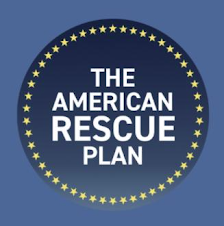OSHA Targets Residential Contractors for Fall Protection Violations
Part of being a good CPA partner to my client’s businesses is keeping track of industry trends that can eat into their bottom line. Many of my clients are in the construction industry so today’s topic is of particular interest to them.
The residential construction industry is receiving a lot of unwanted attention from OSHA for the first time. Injuries on residential projects have increased and now OSHA has named the Residential Construction Industry as a target industry
In December 2010, OSHA introduced stronger worker safeguards to prevent falls in residential construction. The new standards for residential construction were scheduled to go into effect on June 15, 2011, but OSHA announced a three-month phase in to allow employers time to gear up to meet the compliance requirements. The phase in period is over and the new directive is now fully in place as of September 15, 2011.
If you are a residential contractor, general or sub, are you in compliance with the new directive?
Here’s what happened to one general contractor along with four sub-contractors who weren’t:
The U.S. Department of Labor’s Occupational Safety and Health Administration (“OSHA”) cited homebuilder D.R. Horton of Greenwood Village, along with four subcontractors, for safety violations resulting from a fall hazard inspection at a worksite. Proposed penalties for all employers at the worksite totaled $93,640.
According to the OSHA area director for that region, the homebuilder failed to properly manage a residential project jobsite by allowing subcontractor employees to be exposed to serious fall hazards. The alleged violations relate to a lack of fall protection during framing and sheathing.
Here is what you need to know:
If you are a residential contractor, general or sub, you are now required by OSHA to create a written fall protection plan and have it in place on or before September 15th, 2011. If you think the new OSHA directive doesn’t apply to you, you better be sure. The new directive affects any contractor who works at heights of 6 feet or above on wood frame structures. New construction, remodeling and all industries supplying products for home construction and repair are impacted.
"But I’m a sole proprietor with no employees; do I really need a safety program?" Yes, if you want to be in compliance. Furthermore, if you do work for general contractors you may now be asked to provide proof that you are compliant with OSHA. General contractors are required to have safety plans and manuals in place to protect anyone who works on the job site. This includes employees and sub-contractors.
“But I thought these stricter OSHA rules only applied to the big boys working on commercial projects. My work is limited to residential work only.” That’s what a lot of you have thought. While that may have been true to a certain degree in the past, OSHA is changing the rules. Reread the title of this post.
You can expect to see more job site inspections. Inspections are not scheduled, there is no courtesy call to give you time to prepare. OSHA is driving around town looking for residential job sites to inspect for violations. If you do not have your safety program in place you are in violation of the first OSHA fall protection requirements and can be fined if caught by an OSHA inspector.
What will these citations cost you? Inspectors have assessed fines ranging from $7,000 to $77,000. Violations can be classified as serious, other than serious, willful or repeat and penalties vary according to the severity of the violation. We are seeing penalties being negotiated but if you are cited for an OSHA violation and do not have a written safety program in place, penalty reductions are minimal or nonexistent.
What should you do?
Get some help from a professional. This afternoon I met with Ron and Russ Hinds with the Southwest Missouri Safety Company in Nixa to learn what they do to help contractors manage this business and financial risk. These guys are professionals. They offer OSHA training and safety consulting and are the ones to help you develop your written safety program. Click here to visit their website or call them at:
Ron Hinds 417-631-2357
Russ Hinds 417-576-4508

